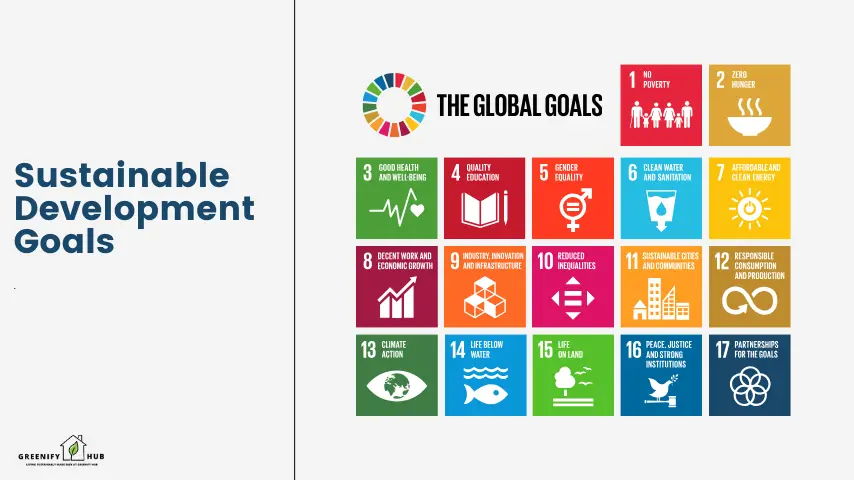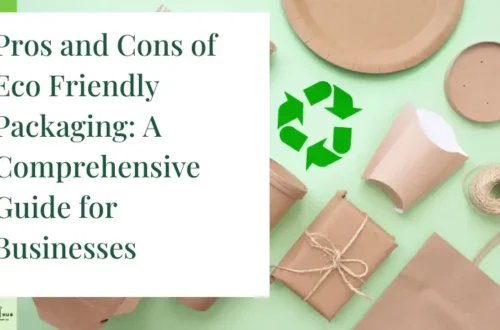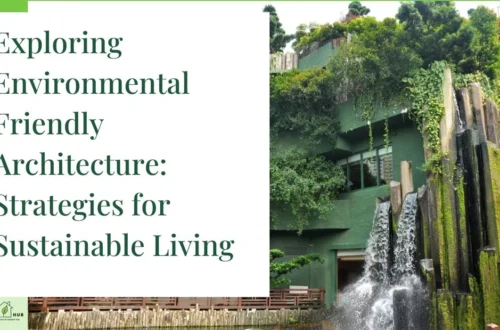Economic Sustainability Unveiled: 10 Key Principles for a Thriving Future

Economic sustainability is more than just a buzzword. It’s a crucial concept that shapes our future.
But what exactly does it mean?
At its core, economic sustainability is about balancing economic growth with environmental responsibility and social equity. It’s like trying to bake the perfect cake – you need just the right mix of ingredients.
Imagine a world where businesses thrive, people prosper, and the planet flourishes. That’s the goal of economic sustainability.
But here’s the catch:
It’s not just about making money. It’s about making money in a way that doesn’t harm our planet or exploit people.
Think of it like this:
You’re playing a video game. You want to level up (that’s economic growth), but you also need to keep your health bar full (that’s environmental protection) and your team happy (that’s social equity).
A solid sustainability strategy is key to achieving this balance. It’s like having a game plan that helps you win while playing fair.
Inclusive growth is another crucial aspect. It’s about ensuring everyone gets a piece of the economic pie, not just a select few.
For example:
When a company invests in worker training, it’s not just helping its employees. It’s contributing to inclusive growth by creating a more skilled workforce.
Or when a city develops affordable housing alongside luxury apartments, it’s fostering inclusive growth by creating opportunities for people of all income levels.
Economic sustainability isn’t just about preserving what we have. It’s about creating a better future for everyone.
It’s a challenge, sure. But it’s also an opportunity. An opportunity to rethink how we do business, how we consume, and how we interact with our planet and each other.
Economic sustainability balances growth with environmental and social responsibility, aiming for a prosperous future for all through inclusive strategies and long-term thinking.
The Triple Bottom Line Approach
Ever heard of the triple bottom line? It’s not a fancy dance move, but it’s just as important for keeping businesses on their toes.
The triple bottom line approach is like a three-legged stool. Each leg represents a crucial aspect:
1. Economic growth
2. Environmental protection
3. Social equity
If one leg is shorter than the others, the whole stool topples over. That’s why balancing all three is crucial for true sustainability.
Let’s break it down:
Economic Growth
This is about making money, sure. But it’s also about creating jobs, fostering innovation, and building resilient economies.
Environmental Protection
It’s not just about hugging trees. It’s about ensuring we have clean air to breathe, safe water to drink, and a stable climate for future generations.
Social Equity
This means creating a fair society where everyone has access to opportunities, regardless of their background.
Here’s a real-world example:
Patagonia, the outdoor clothing company, embodies the triple bottom line approach. They make profits (economic growth), use recycled materials and promote repair over replacement (environmental protection), and ensure fair labor practices (social equity).
By focusing on all three aspects, businesses can create long-term value, not just for shareholders, but for society as a whole.
It’s like planting a tree. You might not see the fruits immediately, but with proper care, it will provide shade, oxygen, and maybe even apples for years to come.
The triple bottom line approach balances economic growth, environmental protection, and social equity, creating sustainable value for businesses and society alike.
RELATED: Mastering the 4 Pillars of Sustainability: Your Comprehensive Guide to a Sustainable Future
Impact of COVID-19 on Economic Sustainability
The COVID-19 pandemic hit the world like a tsunami, causing unprecedented global disruption. It wasn’t just a health crisis; it was an economic earthquake.
Businesses shuttered. Jobs vanished. Supply chains crumbled.
The economic damage was staggering. It was like watching dominos fall in slow motion.
But here’s the twist:
This crisis also put a spotlight on economic sustainability. It exposed the fragility of our current systems and the need for more resilient, sustainable approaches.
For instance:
– Companies with strong sustainability practices weathered the storm better.
– The importance of local supply chains became crystal clear.
– Remote work reduced carbon emissions, showing a path to greener business practices.
The pandemic forced us to rethink our priorities. It showed us that health, economy, and environment are deeply interconnected.
As we rebuild, there’s an opportunity to do things differently. To create systems that are not just profitable, but also resilient and sustainable.
It’s like rebuilding a house after a storm. We have the chance to make it stronger, more efficient, and better suited for the future.
While COVID-19 caused severe economic damage, it also highlighted the importance of sustainable practices and the interconnectedness of health, economy, and environment.
RELATED: Mastering the Three Es of Sustainability: A Comprehensive Guide for Businesses
10 Key Principles for Economic Sustainability
1. Reducing Reliance on Fossil Fuels
Imagine your car running on sunlight instead of gas. That’s the future we’re heading towards.
The lavish use of fossil fuel is like living on credit – it feels good now, but the bill will come due eventually.
Clean energy alternatives are rapidly becoming more efficient and affordable. Solar panels, wind turbines, and even tidal energy are no longer sci-fi fantasies.
By reducing our dependence on fossil fuels, we’re not just helping the environment. We’re also creating new industries and jobs.
2. Embracing Circular Economy
Think of the circular economy as nature’s way of doing business. Nothing goes to waste.
In this model, products are designed to be reused, repaired, or recycled. It’s a shift from “take-make-waste” to “make-use-reuse”.
For example, some furniture companies now offer to buy back their products when customers are done with them. They then refurbish and resell these items.
This sustainability initiative not only reduces waste but also creates new business opportunities. It’s a win-win for the economy and the environment.
3. Implementing Full-Cost Pricing
Full-cost pricing is like showing the nutritional information on food labels. It reveals the true cost of products, including their environmental impact.
For instance, the cost of fossil fuel should include not just extraction and processing, but also the cost of pollution and climate change.
Government regulation can play a crucial role here. By mandating full-cost pricing, they can level the playing field for sustainable products.
This approach encourages businesses to innovate and consumers to make more informed choices.
4. Promoting Sustainable Agriculture
Sustainable agriculture is about growing food in harmony with the natural world.
It’s like tending a garden that not only feeds you but also nurtures the soil and supports local wildlife.
Practices like crop rotation, organic farming, and precision agriculture can increase yields while reducing environmental impact.
For instance, some farmers are using drones to monitor crop health and apply fertilizers only where needed.
By promoting sustainable agriculture, we’re not just securing our food supply. We’re also preserving biodiversity and fighting climate change.
5. Investing in Renewable Energy
Investing in renewable energy is like planting trees for future generations. It’s a long-term investment in our planet’s health.
Solar, wind, and hydroelectric power are becoming increasingly competitive with fossil fuels. They’re our best bet for reducing climate pollution and taking meaningful climate action.
For example, Scotland now generates more electricity from wind than it can use on some days.
By investing in renewables, we’re not just fighting climate change. We’re also creating new jobs and industries for a sustainable future.
6. Enhancing Public Health
Public health is the foundation of a thriving society. It’s about nurturing our most valuable resource: human beings.
Investing in healthcare, clean air and water, and safe working conditions isn’t just the right thing to do. It’s also economically smart.
Healthy people are more productive, creative, and resilient. They’re the cornerstone of human capital.
For instance, countries with universal healthcare often have higher labor productivity and lower healthcare costs in the long run.
By enhancing public health, we’re investing in our collective future.
7. Fostering Innovation and Creativity
Innovation is the lifeblood of economic sustainability. It’s about finding new solutions to old problems.
Companies like Upthink Innovation Agency specialize in helping businesses generate and implement new ideas.
Innovation can lead to more efficient processes, sustainable products, and entirely new industries.
For example, the development of lab-grown meat could revolutionize food production, reducing environmental impact and improving food security.
By fostering a culture of innovation, we’re ensuring our economy can adapt and thrive in the face of future challenges.
8. Prioritizing Long-Term Strategic Thinking
Long-term thinking is like planting an oak tree. You might not sit in its shade, but future generations will.
It’s about looking beyond short-term gains to focus on longer-term sustainability goals.
For instance, some companies are setting science-based targets to reduce their carbon emissions over decades, even if it means higher costs now.
This approach helps businesses anticipate future challenges, build resilience, and create lasting value.
By prioritizing long-term thinking, we’re building a more stable and sustainable economic future.
9. Embracing Systems Thinking
Systems thinking is like seeing the forest and the trees. It’s about understanding how different parts of our economy and society interact.
This approach recognizes that a complete community involves many interconnected elements – from businesses to schools to parks.
It encourages collaboration across different sectors to solve complex problems.
For example, some cities are adopting “smart city” initiatives that integrate transportation, energy, and public services to improve efficiency and quality of life.
By embracing systems thinking, we can create more holistic and effective solutions.
10. Promoting Collaboration and Engagement
Collaboration is the secret sauce of economic sustainability. It’s about harnessing the power of many to create positive change.
This could mean businesses partnering with NGOs, governments working with the private sector, or companies engaging their clients for support and feedback.
For instance, some companies are co-creating products with their customers to ensure they meet real needs sustainably.
By promoting collaboration and engagement, we’re tapping into a wealth of ideas and resources to drive sustainable innovation.
These ten principles form a comprehensive framework for economic sustainability, emphasizing the interconnectedness of environmental, social, and economic factors in creating a resilient and prosperous future.
RELATED: Unleashing Cultural Sustainability: 12 Key Strategies for Thriving Communities
The Role of Sustainability Leadership
Sustainability leadership is like being the captain of a ship navigating through uncharted waters. It requires a clear vision, unwavering commitment, and the ability to inspire others.
But what does it really mean to be a sustainability leader?
It’s not just about making grand statements or setting lofty goals. It’s about walking the talk and making tough decisions that prioritize long-term sustainability over short-term gains.
Take the task Canadian companies face, for instance. Many are grappling with how to transition from fossil fuel-based economies to more sustainable models. This requires strong leadership that can:
1. Set a clear vision for a sustainable future
2. Develop strategies to achieve that vision
3. Inspire and engage employees and stakeholders
4. Navigate complex regulatory environments
5. Balance economic, environmental, and social considerations
One example of effective sustainability leadership is Unilever’s former CEO, Paul Polman. Under his guidance, Unilever launched the Sustainable Living Plan, which aimed to double the company’s size while reducing its environmental impact and increasing its positive social impact.
Sustainability leaders also need to be adept at collaboration. They must work across sectors, engaging with governments, NGOs, and other businesses to drive systemic change.
For instance, the CEO of Patagonia, Rose Marcario, has been vocal about environmental issues and has even encouraged customers to buy less and repair more – a counterintuitive move for a retail company, but one that aligns with their sustainability values.
Effective sustainability leadership isn’t just good for the planet – it’s good for business too. Companies with strong sustainability practices often see improved brand reputation, increased employee engagement, and better long-term financial performance.
Sustainability leadership requires a clear vision, strong commitment, and the ability to inspire and collaborate, driving positive change while balancing economic, environmental, and social considerations.
RELATED: 4 Game-Changing Sustainable Business Practices for Lasting Impact
United Nations’ Sustainable Development Goals
The United Nations’ Sustainable Development Goals (SDGs) are like a global to-do list for a better world. They’re 17 interconnected goals aimed at addressing the world’s most pressing challenges by 2030.
From ending poverty to combating the climate crisis, these goals provide a roadmap for countries, businesses, and individuals to work towards a more sustainable future.
But how do they work in practice?
Let’s take the United States as an example. While the U.S. is one of the world’s largest economies, it faces challenges in areas like healthcare access, income inequality, and climate action.
The SDGs provide a framework for addressing these issues:
1. Goal 3 (Good Health and Well-being) pushes for universal healthcare access.
2. Goal 10 (Reduced Inequalities) encourages policies to reduce income disparities.
3. Goal 13 (Climate Action) calls for urgent action to combat climate change.
Companies are also aligning their strategies with the SDGs. For instance, Microsoft has committed to becoming carbon negative by 2030, supporting Goal 13.
The SDGs aren’t just feel-good goals – they represent real economic opportunities. According to a report by the Business and Sustainable Development Commission, achieving the SDGs could open up $12 trillion of market opportunities.
By providing a common language and shared set of objectives, the SDGs are helping to coordinate global efforts towards sustainable development.
They remind us that we’re all in this together – whether we’re in New York or New Delhi, we share the same planet and face the same global challenges.
The UN’s Sustainable Development Goals provide a comprehensive framework for global sustainable development, offering both challenges and opportunities for countries and businesses alike.

RELATED: Environmental Sustainability Unveiled: Key Concepts Shaping Our Future
Quantifiable Benefits of Economic Sustainability
Economic sustainability isn’t just good for the planet – it’s good for the bottom line too. But don’t just take our word for it. Let’s look at some hard numbers.
A recent notable finding from a McKinsey report shows that companies with high ESG (Environmental, Social, and Governance) ratings outperform their peers financially in the long term.
Here are some eye-opening statistics:
1. Renewable Energy Cost Savings:
The cost of solar power has dropped by 89% since 2010. Companies investing in solar are seeing significant energy cost savings.
2. Waste Reduction Benefits:
Unilever reported saving over €1 billion since 2008 through waste reduction and resource efficiency.
3. Employee Engagement:
Companies with strong sustainability programs see 55% better morale and 38% better employee loyalty (Society for Human Resource Management).
4. Consumer Preference:
73% of millennials are willing to pay more for sustainable products (Nielsen).
5. Risk Mitigation:
Companies with strong ESG practices experienced less negative stock returns during the COVID-19 crisis (BlackRock).
6. Innovation Boost:
Sustainable companies are 400% more likely to be viewed as innovative (Deloitte).
7. Talent Attraction:
40% of millennials have chosen a job because of company sustainability (Fast Company).
These numbers paint a clear picture: sustainability pays off.
For instance, Patagonia’s commitment to sustainability has not only reduced its environmental impact but also driven strong customer loyalty and sales growth.
Or consider Interface, a carpet manufacturer that has saved over $500 million through waste reduction initiatives since 1994.
These quantifiable benefits demonstrate that economic sustainability isn’t just an ethical choice – it’s a smart business strategy. It drives innovation, attracts talent, reduces costs, and builds resilience.
As we move towards a more sustainable future, companies that embrace these practices are likely to find themselves at a competitive advantage.
Economic sustainability offers quantifiable benefits across various business aspects, from cost savings and risk mitigation to improved employee engagement and customer loyalty.
RELATED: 10 Essential Steps to Mastering Social Sustainability: Transform Your Business and Society
Transitioning to a Green Economy
Transitioning to a green economy is like upgrading from an old, gas-guzzling car to a sleek, electric model. It’s about reimagining our economic systems to work in harmony with our planet.
But what exactly is a green economy?
It’s an economy that aims for sustainable development without degrading the environment. It’s low-carbon, resource-efficient, and socially inclusive.
The urgency of this transition is clear. We’re facing a climate emergency that demands immediate action.
Here’s what this transition might look like:
1. Energy Sector: Shifting from fossil fuels to renewable energy sources like solar and wind.
2. Transportation: Moving towards electric vehicles and improved public transit systems.
3. Agriculture: Adopting sustainable farming practices that preserve soil health and biodiversity.
4. Habitat Conservation: Protecting natural habitats and biodiversity through conservation efforts and sustainable land management practices.
5. Circular Economy: Embracing a circular economy model that minimizes waste and promotes resource reuse and recycling.
6. Green Jobs: Creating employment opportunities in environmentally friendly sectors such as renewable energy, green construction, and sustainable agriculture.
7. Policy Support: Implementing government policies and regulations that incentivize and support the transition to a green economy.
Transitioning to a green economy requires a collective effort from governments, businesses, and individuals. It’s not just about environmental conservation; it’s about building a resilient and sustainable future for generations to come.
By investing in green technologies, supporting sustainable practices, and prioritizing environmental stewardship, we can combat climate change and create a more prosperous and equitable world.
Transitioning to a green economy involves adopting sustainable practices across various sectors, creating green jobs, and implementing supportive policies for a resilient and environmentally friendly future.
RELATED: Conservation and Sustainability: 10 Key Differences That Shape Our Planet’s Future
Conclusion
As we conclude our journey through the principles of economic sustainability, it’s clear that the path to a thriving future demands our collective action and commitment. By embracing these ten key principles, from reducing fossil fuel reliance to fostering innovation and collaboration, we can create a more resilient and equitable global economy.
The challenges we face are significant, but so are the opportunities. By adopting a triple bottom line approach and aligning our efforts with the United Nations’ Sustainable Development Goals, we can drive positive change across sectors and communities. Remember, economic sustainability is not just about preserving resources; it’s about creating a world where economic growth, environmental protection, and social equity coexist harmoniously.
As you move forward, consider how you can implement these principles in your own life, business, or community. Every action, no matter how small, contributes to our shared sustainable future. Together, we can build an economy that not only thrives but also nurtures the planet and its people for generations to come.





